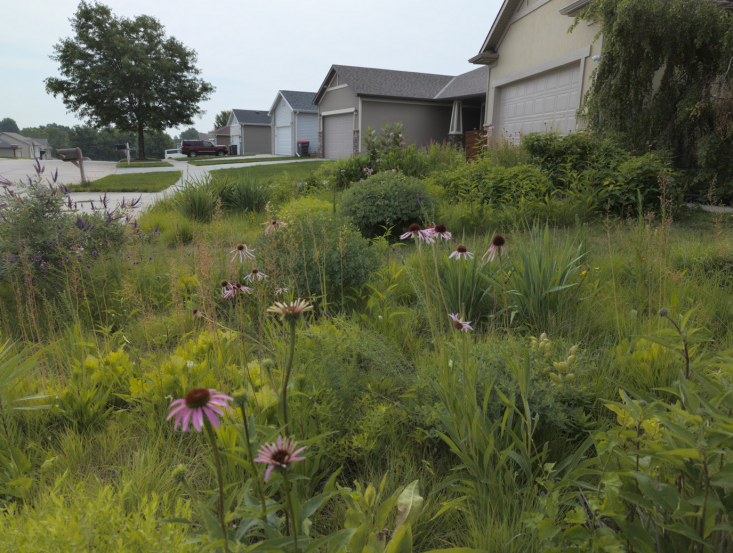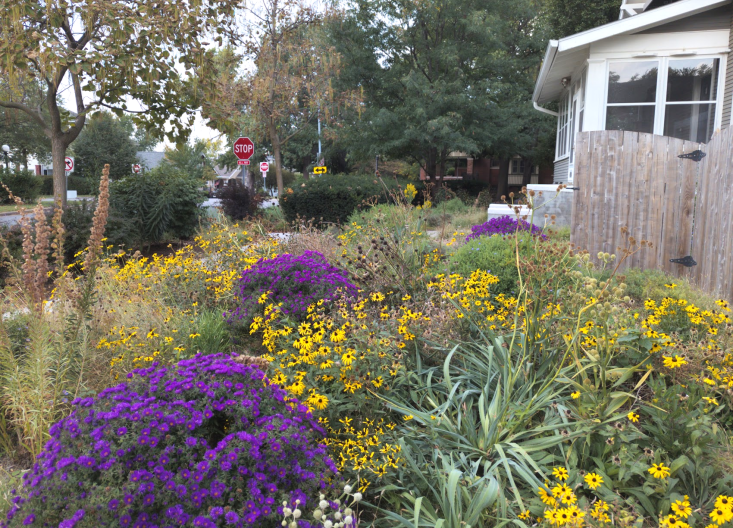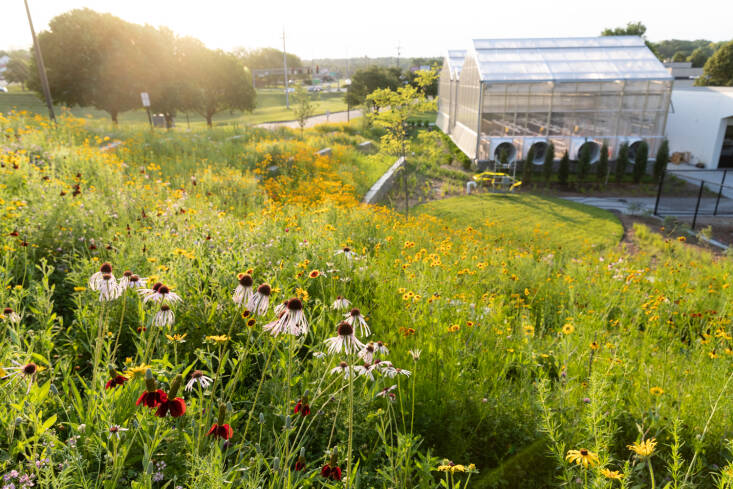
An Interview with Benjamin Vogt, Founder of Prairie Up and No-Lawn Advocate
There’s good reason that the Prairie Up newsletter landed on our list of favorite garden newsletters. Not only is its creator, Benjamin Vogt, a passionate advocate for ecology-based gardening (something we should all aspire to), he’s a bona fide writer as well, with a PhD in writing and literature, and two books (and another one slated to publish next year) to prove it. (Our review of his most recent? “Utterly engaging.”)
Prairie Up is also the name of his Lincoln, Nebraska, design and online education firm specializing in natural garden design and management. “I focus on unlawning, or lawn conversions, often suburban front yards but also acreage projects as well,” he says. “We need more examples of natural gardens (especially those on a middle class scale) in more places that more people can see as we help more wildlife and reduce resource use.” Hear, hear!
Today, Benjamin explains why he detests “wall-to-wall lawn carpeting” and loves insects (“the more insane the air traffic, the better.”)
Photography courtesy of Benjamin Vogt.
Your first garden memory:
How about nature memory? Handling and stressing out Texas horned lizards in a rock pile on an empty lot next to our home in western Oklahoma. For more formal gardening, puttering with my mom around the house in my teen years and tagging along for nursery shopping trips (which I still do). And also hearing the wingbeats of Canadian geese as they surprised over a small wood.
Garden-related book you return to time and again:
I return to Field Guide to Wildflowers of Nebraska and the Great Plains by Jon Farrar because it’s a valuable reference tool, and Jewels of the Plains by Claude Barr for the same reason. Can’t go wrong with Planting in a Post-Wild World by Thomas Rainer and Claudia West.
Instagram account that inspires you:
Frankly, the IG algorithm keeps me exposed to a variety of new accounts with lovely garden images and practical knowledge. That said, I tend to favor activist-based accounts on the environment and social justice because that’s rocket fuel for my garden thinking and outreach. It’s all connected.
Describe in three words your garden aesthetic.

Ditch the lawn.
Plant that makes you swoon:
Anything with about a dozen different species of insect, bug, and spider on it. The more insane the air traffic the better. Plants don’t make me swoon—communities and ecosystems do.
Plant that makes you want to run the other way:
Hosta. Daylily. Butterfly bush.
Favorite go-to plant:
In sun, that’s Symphyotrichum oblongifolium. In shade, it’s Carex albicans.
Hardest gardening lesson you’ve learned:
Patience, or trusting in the plants to show me what/where they want to be. Also, designing by sociability levels above all else, which I’m still learning—we should be focused on this as the core metric in plant selection because too many garden management issues are created with mismatched plants and then people give up.
Unpopular gardening opinion:
Gardens aren’t paintings. Plants aren’t brushstrokes.
Gardening or design trend that needs to go:
Wall-to-wall lawn carpeting for the kids. All the neighborhood kids hang out here in our meadows for hours at a time. Wonder why.
Favorite gardening hack:
Planting in late October. And sometimes into November.
Favorite way to bring the outdoors in.

Just get outside no matter the time of year.
Every garden needs a…
…rethink on what’s pretty and to whom.
Favorite hardscaping material:
Corten steel. I know it’s cliché but darn.
Tool you can’t live without:
Besides the cordless mixing drill with auger? Soil knife, hands down.
Go-to gardening outfit:
Jeans and a t-shirt and boots. And sunscreen. And bug spray.
Favorite nursery, plant shop, or seed company:
I try to source as regionally as possible, both for carbon footprint reasons and genetic origin. Most of what I get comes from Taylor Creek Restoration Nursery.
On your wishlist:
Twenty to forty acres to restore to prairie and create one heckuva display/trail garden.
Not-to-be-missed public garden/park/botanical garden:
Any nearby prairie.
The REAL reason you garden:

To create a breach in the social contract of lawn-dominated suburbia forced upon us through classist and racist hierarchies, and fight back against an oppressive system that has evolved to trick/scare us into thinking lawn equals good health and safe spaces when it’s actually the exact opposite.
(Visited 3 times, 1 visits today)









